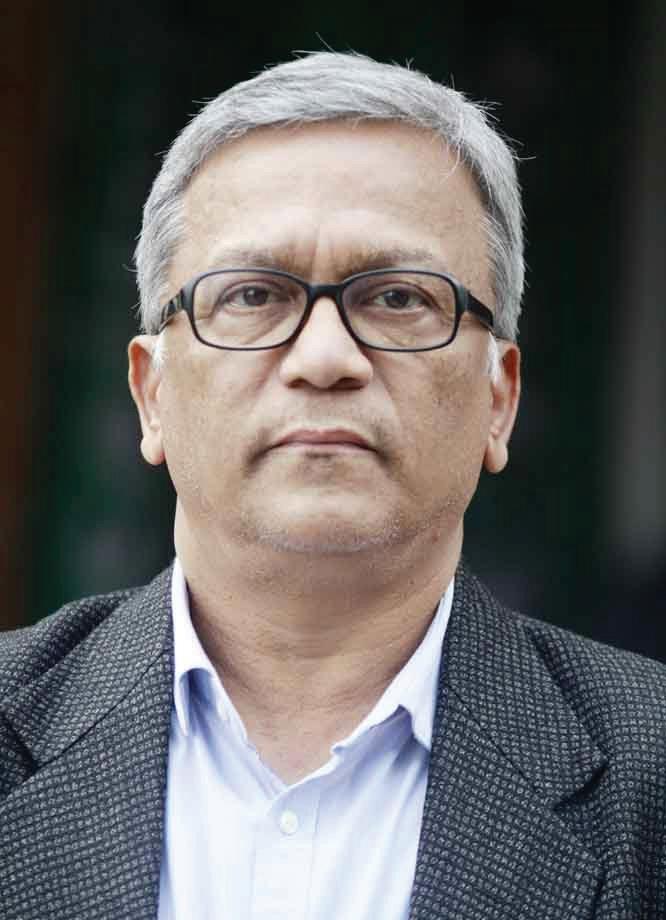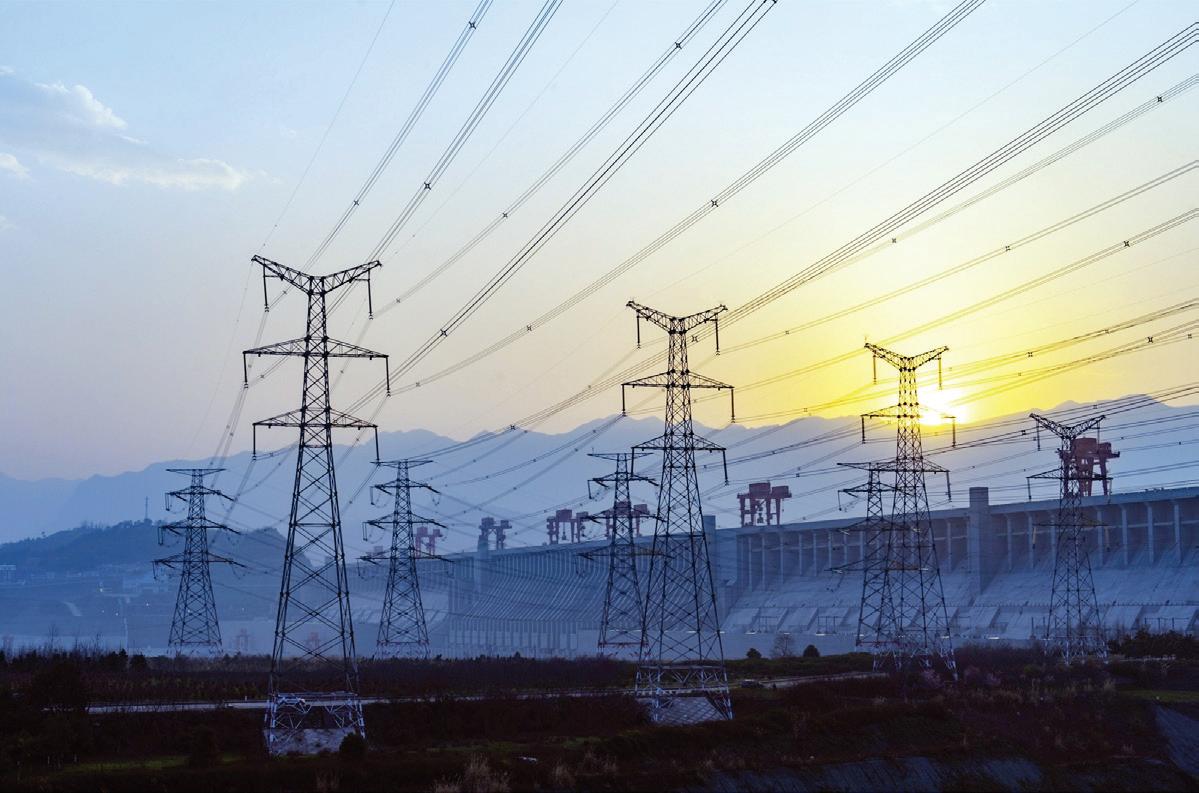INDIA NEWS
Dec 16-31, 2020 - Vol 1, Issue 12
MAKE IN INDIA
Make in India: Emerging Opportunities As world economies restart their engines in a bid to regain lost ground due to the Covid-19 pandemic, India too shows signs of economic buoyancy and promise. India’s Make in India initiative holds a key to the global economic revival, something that should interest Australian government ministries, corporate sector, entrepreneurs, institutions seeking R&D collaborations and Australia Inc in general, among others. India assumes greater importance as several major world economies including American, Japanese, German, British and South Korean look to move out and diversify their businesses from China. India has jumped to 63rd rank in the World Bank’s Ease of Development 2020 report, and has also been ranked as the 9th largest recipient of Foreign Direct Investment destination in 2019 by the World Investment Report 2020 of the United Nations Conference on Trade and Development (UNCTAD).
UN declares ‘Invest India’ winner of investment promotion award 2020
New Delhi, Dec 7 (IANS): The United Nations Conference on Trade and Development (UNCTAD) has declared ‘Invest India’ as winner of the 2020 United Nations Investment Promotion Award in a ceremony at its headquarters in Geneva. The Award recognises and celebrates the outstanding achievements of the world’s bestpractice investment promotion agencies. The evaluation was based on UNCTAD’s assessment of work undertaken by 180 national investment promotion agencies across the world. The Covid-19 pandemic had generated challenges for investment promotion agencies (IPAs), forcing them to shift focus from routine investment promotion and facilitation towards crisis management, notification of government emergency and economic relief measures, provision of crisis support services, and contribution to national Covid-19 business response efforts. All this was being done while agencies had closed offices, moved functions online and asked staff to work from home. In March, UNCTAD constituted a team to monitor IPAs response to the pandemic. UNCTAD reported best practices from investment promotion agencies in the IPA Observer publications in April and July. IPAs response to the pandemic became the basis for the evaluation of the 2020 United Nations Investment Promotion Award. UNCTAD highlighted good practices followed by ‘Invest India’ such as the Business Immunity Platform, Exclusive Investment Forum webinar series, its social media engagement and focus Covid response teams (such as business reconstruction, stakeholder outreach and supplier outreach) created as a response to the pandemic in its publications. Invest India has also shared longterm strategies and practices being followed for investment promotion, facilitation and retention at UNCTAD’s high-level brainstorming sessions. UNCTAD is the central agency which monitors performance of investment promotion agencies and identifies global best practices. Germany, South Korea, and Singapore have been some of the past winners of the award.
UNDP and Invest India identify opportunities for www.indianews.com.au
SDGs in India
New Delhi, Nov 20 (IANS): UNDP and Invest India launched the SDG Investor Map for India recently, laying out 18 Investment Opportunities Areas (IOAs) in six critical sustainable development goals (SDG) enabling sectors that can help India push the needle forward on sustainable development. “India occupies a key role in determining the success of the SDGs, globally. Invest India is pleased to have partnered with UNDP India to develop the firstever ‘SDG Investor Map for India’. This initiative is an instrumental stride in India’s development trajectory, and I believe it couldn’t have come at a better time. We hope our data-backed research and insights serve as useful blueprints to understand how best the SDG financing gap can be narrowed in India”, Deepak Bagla, CEO & MD, Invest India, said on the occasion. The development pathways that India chooses will set an example for other emerging nations and determine the achievement of global environmental and social targets. It is thus critical to ensure that these pathways are sustainable, resilient and equitable. However, due to the Covid-19 pandemic, the SDG Financing Gap has widened by an estimated $ 400 billion in developing countries, adding to the preCovid shortfall of $ 2-2.5 trillion per annum. While the government continues to show strong support for the SDGs and a sustainable recovery, mobilising this kind of capital and supporting the on-ground innovation needed to meet the SDG targets by 2030, requires the collective efforts of the public and private sector transition from short-term recovery to long-term sustainability. This is where the SDG Investor Map for India comes in. By mapping the overlaps and gaps between public sector priorities and private sector interest, the SDG Investor Map lays out pathways that can bring together private-sector investment and public sector support for 6 SDG-enabling sectors including education, healthcare, agriculture and allied activities, financial services, renewable energy alternatives and sustainable environment. These sectors and the IOAs within them were selected through a rigorous analytical process that included extensive consultations with a number of major domestic and international investors, government stakeholders and think-tanks. This ensured that the Map’s findings were truly reflective of market sentiment, a UNDP statement said. Of the 18 IOAs identified, 10 are
already mature investable areas that have seen good Private Equity and Venture Capital activity, and feature companies that have been able to unlock scale and demonstrate profitability. The remaining eight IOAs are emerging opportunities, which have seen traction from earlystage investors. The map has also identified eight White Spaces, which have seen investor interest and have the potential to grow into IOAs within a 5-6-year horizon. However, these require further policy support and private sector participation to mature into commercially attractive IOAs, UNDP said. Nearly 50% of the shortlisted IOAs have historical investments that have yielded IRRs in excess of 20%. About 84% of the IOAs have investment timeframes ranging from the short term (less than 5 years) to the medium-term (between 5- 15 years). The observations from the map present a strong case for investing in SDG enabling sectors and IOAs, bridging the gap between highlevel development targets and the need for commercially viable returns, a UNDP press release said.
Haryana CM invites Singapore investments in Haryana
Haryana CM Manohar Lal Khattar Chandigarh, Nov 20 (IANS): Haryana Chief Minister (CM) Manohar Lal Khattar recently offered support to companies of Singapore to expand their base in the state. He said to facilitate the investors the Foreign Cooperation Department has been set up and it will provide assistance to the Singaporean companies to set up businesses in the state. Khattar was speaking at the Haryana-Singapore Roundtable Virtual Conference organised by the state government, Invest India and Enterprise Singapore. Singapore High Commissioner to India, Simon Wong, also attended the conference. CEOs and top representatives of leading companies of Singapore like Durapower, YCH Group, Agrocorp International, Transworld Terminals, Skill SG Ventures, Legend Logistics,
facebook.com/indianewsaustralia
Surbana Jurong, etc., showed keen interest in expanding their units in the fields of logistics, warehousing, cold chain, transport hub, distribution facilities and manufacturing of electrical gadgets, a statement by the state government said. The Chief Minister said “out of various models of business, we believe in the H2H model of working that is ‘heart-to-heart’ approach of collaboration”. The Chief Minister said India and Singapore have a long-lasting relationship. The relationship between Haryana and Singapore has elevated in recent years with Singapore’s involvement in smart cities, solid waste treatment, wastewater treatment plants and healthcare in the state. He said the state is considered an industrial powerhouse with more than 250 fortune 500 companies based in Haryana. The Chief Minister said that to ensure a seamless investment process, a single-roof clearance system has been set up wherein any investor or enterprises can obtain all state related clearances through an online portal in a time-bound manner. All clearances are granted to investors in a maximum timeframe of 45 days. Over, one lakh clearances from various departments have already been granted through this mechanism, he said. He said the state is focusing on the creation of world-class infrastructure. The state is working on big projects like integrated Multi-Modal Logistics Hub in Narnaul, Global City in Gurugram and an integrated aviation hub in Hisar. “We are in the process of developing three smart cities in Faridabad, Gurgaon and Karnal,” Khattar said. High Commissioner Simon Wong said Singapore is looking for collaboration with Haryana in the fields of 5G and 6G technology, agro-tech industries, next generation textile, etc. He said in the last three years Singapore has been the largest investor in Haryana. In India, Singapore has investments of $85 billion.
New Delhi, Dec 7 (IANS): After cementing its position in the Indian smart TV market, Xiaomi’s Mi brand is all set to enter the premium segment with launching a fully ‘make in India’ 55-inch QLED TV on December 16, a top company executive revealed on December 7. Mi Smart TVs continue to be the best-selling devices for the nine consecutive quarters in India, with a 22 per cent market share (Q2, 2020). The company recently said it has sold over 50 lakh Mi TVs since its inception in 2018. “We have seen that the aspirations of the consumers are everchanging. With the launch of new QLED TV, we are focusing on the improvement of the momentum of this segment as well as increase its adaptation rate,” Eshwar Nilakantan, Category Lead, Smart TV, Mi India, told IANS. “Mi QLED TV will combine great picture quality, incredible acoustic audio and a great lifestyle design. It will be a perfect amalgamation of technology and design, enhancing both the living space and entertainment experience for consumers,” Nilakantan elaborated. QLED TVs are at the forefront of emerging TV technology. They make up a large portion of the premium TV segment and amplify the aspirations of the TV viewing public. The QLED market has seen merit in proposing a combination of lifestyle and functional merit. “In 2018, we successfully launched smart TVs in India with Mi TV 4 which was the world’s thinnest LED TV at 4.9mm. We have completed two years of our TV journey in India. Since Q2 2018, Mi India has remained the number one Smart TV brand in India,’’ Nilakantan added. Mi TVs are powered by Patchwall technology that is designed specifically for Indian consumers. According to the company, PatchWall is India’s most comprehensive content platform on TVs with deep integration of over 23 content partners including Netflix, Prime Video, Hotstar and more content from over 16 languages and with over 30 other unique features.
Xiaomi’s Mi to launch ‘make in India’ 55-inch QLED TV
13




















